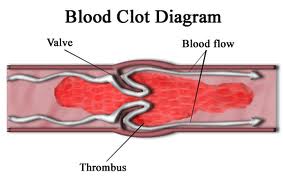Genetic clue to high heart risk of black Americans
Share
Explore Our Galleries
Breaking News!
Today's news and culture by Black and other reporters in the Black and mainstream media.
Ways to Support ABHM?
By Andy Coghlan, NewScientist.com
The clot thickens. We now have a clearer idea of why black Americans are twice as likely as white Americans to develop heart disease. It seems that fragments circulating in the blood, known as platelets, can form blood clots more easily in African Americans. Clotting is a classic element of heart disease and heart attack.

“Unexpectedly, we found that platelets from black donors clotted faster and to a greater extent in response to the naturally occurring clotting agent, thrombin,” says Paul Bray of Thomas Jefferson University in Philadelphia, Pennsylvania, who led the work. “This provides a new understanding of the effects of race on heart disease and other blood-clot related illnesses.”
Bray and his colleagues took blood samples from 70 black and 84 white healthy volunteers and found that a protein known as PC-TP, short for phosphatidylcholine transfer protein, is one of the main culprits. PC-TP activates a clotting factor called PAR4.
The gene that produces the protein is four times more active in the platelets of black Americans than it is in white Americans. (. . .) “Compared with white patients, black people have a twofold increased incidence of heart disease and a lower long-term survival,” he says. “The reasons for this disparity are complex, but even when socioeconomic and environmental factors are considered, the survival of black heart attack patients is two-and-a-half times lower than in white patients.”
An important implication, says Bray, is that we need to develop a wider array of treatments to make sure that there are drugs that work for everyone.
“Black people are very poorly represented in most clinical studies on heart disease,” he says. “Our findings suggest doctors cannot therefore assume that heart disease treatment studies on whites will hold true for everyone.”










Comments Are Welcome
Note: We moderate submissions in order to create a space for meaningful dialogue, a space where museum visitors – adults and youth –– can exchange informed, thoughtful, and relevant comments that add value to our exhibits.
Racial slurs, personal attacks, obscenity, profanity, and SHOUTING do not meet the above standard. Such comments are posted in the exhibit Hateful Speech. Commercial promotions, impersonations, and incoherent comments likewise fail to meet our goals, so will not be posted. Submissions longer than 120 words will be shortened.
See our full Comments Policy here.